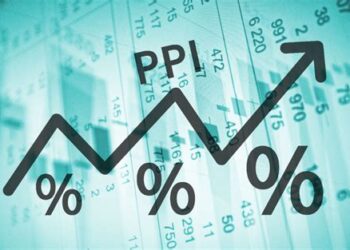The real estate market is a fundamental pillar of the global economy, representing significant wealth for individuals, businesses, and nations alike. However, it’s far from static. Like ocean tides, it experiences constant shifts and cycles, influenced by a complex interplay of economic, demographic, technological, and even geopolitical forces. Understanding these shifts isn’t just for investors or developers; it’s crucial for homeowners, renters, and anyone looking to make informed decisions about their living situation or financial future. This extensive guide will delve deep into the various factors driving real estate market shifts, analyze current trends, explore regional variations, and provide actionable strategies for navigating these dynamic conditions, whether you’re buying, selling, or investing.
The Anatomy of Real Estate Markets

Real estate markets don’t move in a vacuum. Their fluctuations are a result of interconnected factors that dictate supply, demand, and ultimately, prices.
A. Economic Indicators:
A.1. Interest Rates: Perhaps the most potent force influencing housing affordability and investor leverage, interest rates directly impact mortgage costs. Lower rates make borrowing cheaper, increasing buying power and stimulating demand. Higher rates do the opposite, cooling down overheated markets. Central bank policies, especially their efforts to combat inflation, play a crucial role here.
A.2. Inflation: Inflation can be a double-edged sword for real estate. On one hand, real estate is often considered a hedge against inflation, as property values and rents tend to rise with general price levels. On the other hand, aggressive interest rate hikes by central banks to combat high inflation can increase borrowing costs, thereby slowing down the market.
A.3. Employment Rates: A robust job market with low unemployment and wage growth fuels consumer confidence and purchasing power, increasing demand for housing. Conversely, high unemployment or job insecurity can lead to foreclosures and reduced demand. Stable, high-paying jobs are fundamental to a healthy housing market.
A.4. GDP Growth: A strong national or regional Gross Domestic Product (GDP) growth indicates a healthy economy, which generally translates into a stronger real estate market. GDP growth suggests business expansion, which often leads to job creation and increased demand for both residential and commercial properties.
A.5. Consumer Confidence: When consumer confidence is high, people are more likely to make large purchases, including homes. Economic stability and positive outlooks encourage investment in real estate, while uncertainty makes buyers hesitant.
B. Demographic Shifts:
B.1. Population Growth: An increasing population, particularly in urban or desirable areas, naturally drives up demand for housing and infrastructure, leading to price appreciation. This is often linked to immigration and birth rates.
B.2. Household Formation: The rate at which new households are formed (e.g., young adults moving out, divorces) directly impacts the need for housing units, regardless of overall population growth.
B.3. Generational Trends: Different generations (Millennials, Gen Z, Baby Boomers) have varying housing preferences, financial capacities, and life stages, influencing demand for specific types of properties (e.g., starter homes, apartments, retirement communities).
B.4. Urbanization vs. Suburban/Rural Migration: Shifts between urban, suburban, and rural living preferences can significantly impact demand and prices in different geographical areas. The pandemic, for example, accelerated a trend towards more suburban and rural living for some.
C. Supply-Side Dynamics:
C.1. New Construction Rates: The pace of new housing construction is critical. If supply cannot keep up with demand, prices will rise. Factors affecting construction include labor availability, material costs, land availability, and regulatory hurdles. Delays in obtaining permits or rising construction costs can severely limit new supply.
C.2. Housing Inventory: The overall inventory of homes for sale indicates market balance. A low inventory favors sellers, leading to bidding wars and price increases. A high inventory favors buyers, creating more competition among sellers and potentially lowering prices.
C.3. Land Use and Zoning Laws: Local land use and zoning regulations can severely restrict the type and density of new construction, directly impacting housing supply and affordability. Strict zoning can limit multi-family dwellings, for example, exacerbating housing shortages.
D. Government Policies and Regulations:
D.1. Tax Incentives: Government tax incentives for homeownership (e.g., mortgage interest deductions, first-time buyer credits) can stimulate demand. Conversely, changes to property taxes or capital gains taxes on real estate can impact investment decisions.
D.2. Housing Subsidies: Subsidies and affordable housing initiatives aim to increase access to housing for lower-income individuals but can also influence market dynamics and development patterns.
D.3. Rent Control: Rent control policies can impact rental property investments, potentially discouraging new development by capping potential returns for landlords.
D.4. Infrastructure Spending: Government investment in infrastructure (roads, public transit, schools, hospitals) can significantly boost property values in surrounding areas by improving accessibility and quality of life.
E. Technological Advancements:
E.1. PropTech Innovations: Property technology (PropTech) is transforming how real estate is bought, sold, managed, and invested in. Virtual tours, AI-powered valuation tools, blockchain for property records, and smart home technologies are changing the industry.
E.2. Remote Work: The widespread adoption of remote and hybrid work models has fundamentally altered where people choose to live, impacting demand for office spaces and creating opportunities in previously less desirable residential areas. This trend has had a profound impact on commercial real estate and the dispersion of residential demand.
Current Global Real Estate Market Trends
While specific conditions vary by region, several overarching trends are shaping the global real estate market.
A. Cooling Housing Markets (in many developed nations):
1. Impact of Higher Interest Rates: Following a period of rapid appreciation, many developed housing markets are experiencing a cooling phase. This is primarily driven by persistent high interest rates, which have significantly increased the cost of borrowing and reduced affordability for potential buyers.
2. Price Adjustments: We are seeing price adjustments, with some markets experiencing modest declines or a flattening of appreciation, rather than the rapid gains seen in recent years. This is a normalization after an unsustainable boom.
3. Reduced Transaction Volumes: Higher rates and economic uncertainty are leading to reduced transaction volumes as both buyers and sellers adopt a wait-and-see approach.
B. Persistent Affordability Challenges:
1. High Prices vs. Incomes: Despite some cooling, housing affordability remains a significant challenge in many urban and desirable areas. Home prices, even with recent adjustments, are still elevated relative to average incomes, making homeownership difficult for many first-time buyers.
2. Rental Market Pressures: As homeownership becomes less accessible, demand for rentals remains strong, pushing rental prices higher in many regions, creating a cost-of-living crisis for renters. Inventory shortages in rental markets contribute to this.
C. Commercial Real Estate (CRE) Reassessment:
1. Office Market Woes: The shift to remote and hybrid work has profoundly impacted the office sector of CRE. Vacancy rates are elevated in many major cities, and there’s a significant re-evaluation of office space needs, leading to potential long-term value adjustments for office properties.
2. Strength in Industrial/Logistics: Conversely, the industrial and logistics sectors (warehouses, distribution centers) remain strong, driven by the continued growth of e-commerce and the need for resilient supply chains.
3. Retail Adaptation: The retail sector continues to adapt, with successful spaces focusing on experiential offerings, last-mile delivery hubs, or repurposing existing spaces. Traditional brick-and-mortar retail faces ongoing challenges from online shopping.
D. Focus on Sustainability and ESG:
1. Green Buildings: There’s a growing emphasis on sustainable building practices (green buildings), energy efficiency, and reducing the carbon footprint of real estate. This is driven by regulatory pressures, investor demand for ESG-compliant assets, and tenant preferences.
2. Resilience to Climate Change: Developers and investors are increasingly considering the physical risks of climate change (e.g., flood zones, wildfire risk) when making investment decisions and designing new projects, incorporating climate resilience features.
E. Emerging Markets’ Dynamics:
1. Varied Growth: Real estate markets in emerging economies often exhibit more varied dynamics. Some benefit from rapid urbanization, strong demographic trends, and increasing foreign investment, leading to robust growth.
2. Sensitivity to Global Capital: However, they can also be more susceptible to global capital outflows, currency fluctuations, and domestic political instability, making them higher-risk, higher-reward propositions. Rapid economic development and a growing middle class often fuel demand in these markets.
F. Short-Term Rental Market Evolution:
The short-term rental market (e.g., Airbnb, Vrbo) continues to evolve. While popular with travelers, it faces increasing scrutiny and regulation from local governments concerned about housing affordability for residents, leading to new taxes and restrictions in many cities.
A Differentiated Landscape

While global trends exist, real estate is inherently local. What happens in one city or country may not reflect another.
A. North America:
1. United States: The US housing market is adjusting to higher rates, with cooling demand and some price moderation. Affordability remains a key issue. Commercial real estate faces significant headwinds in the office sector, while industrial and residential rentals remain relatively strong.
2. Canada: Canada’s housing market, particularly in major cities, experienced rapid growth and is now seeing a similar slowdown due to interest rate hikes. High household debt levels are a concern.
B. Europe:
1. Western Europe: Many Western European markets are also experiencing a slowdown in housing transactions and some price stabilization after a period of robust growth. Energy costs and inflation are key factors. Commercial real estate is adapting to new work models.
2. Eastern Europe: Some Eastern European markets show resilience, driven by economic growth and foreign investment, though geopolitical risks can influence investor sentiment.
C. Asia-Pacific:
1. China: China’s property market faces significant challenges, including developer debt issues and government efforts to control speculation. This has broad implications for its domestic economy and global markets. The government’s push for “common prosperity” is reshaping the real estate landscape.
2. India: India’s real estate market is generally strong, benefiting from rapid urbanization, a young population, and robust economic growth, particularly in residential and industrial sectors.
3. Southeast Asia: Countries like Vietnam, Indonesia, and Thailand show varying degrees of growth, often driven by foreign direct investment, tourism recovery, and infrastructure development. Some are experiencing property booms, while others are more measured.
4. Japan: Japan continues to navigate its unique demographic challenges, with a focus on urban core regeneration and adapting properties for an aging population. Tokyo, in particular, remains a strong investment hub.
D. Middle East:
The Middle East, particularly the UAE and Saudi Arabia, is seeing significant real estate development, driven by ambitious diversification plans away from oil, tourism, and large-scale infrastructure projects. This region often attracts considerable international investment.
E. Latin America & Africa:
These regions present diverse and often volatile real estate markets, influenced by commodity prices, political stability, and economic reforms. Urbanization is a major driver in many cities, but access to finance and infrastructure remain critical challenges. Opportunities exist in specific growth corridors and sectors.
Strategic Responses to Market Shifts
Whether you’re a buyer, seller, investor, or simply planning your future, understanding how to adapt to these shifts is key.
A. For Buyers:
1. Assess Affordability Realistically: With higher interest rates, carefully evaluate your budget and what you can truly afford. Don’t overextend yourself. Focus on total monthly housing costs, not just the purchase price.
2. Long-Term Perspective: If buying a primary residence, focus on the long-term benefits of homeownership. Short-term market fluctuations are less critical if you plan to stay in the home for many years.
3. Explore Opportunities: In cooling markets, there may be less competition, more room for negotiation, and potentially better deals. Be patient and prepared to act when the right property emerges.
4. Secure Pre-Approval: Get pre-approved for a mortgage to understand your borrowing capacity and show sellers you’re a serious buyer.
5. Don’t Skip Due Diligence: Always conduct thorough inspections and due diligence. In a buyer’s market, you have more leverage to request repairs or price adjustments.
B. For Sellers:
1. Price Strategically: In a cooling market, overpricing can lead to your property sitting on the market. Work with a knowledgeable real estate agent to price your home competitively based on recent comparable sales.
2. Enhance Curb Appeal: Make your property as attractive as possible. Small improvements can make a big difference in a market with more inventory.
3. Be Flexible: Be open to negotiations on price and terms. Buyers have more options in a cooling market.
4. Understand Your Motivation: If you don’t need to sell, you might consider waiting for market conditions to improve. If you must sell, set realistic expectations.
C. For Investors:
1. Diversify Portfolio: Don’t put all your real estate investments into one type of property or location. Diversify across residential, commercial (where appropriate), and different geographies.
2. Focus on Cash Flow: Especially in uncertain times, prioritize properties that generate strong cash flow (rental income exceeding expenses) over speculative appreciation.
3. Explore Niche Sectors: Consider niche real estate sectors that may be more resilient or counter-cyclical, such as data centers, self-storage, or senior living facilities.
4. Leverage Technology: Utilize PropTech for market analysis, property management, and identifying investment opportunities.
5. Due Diligence and Risk Assessment: Conduct thorough due diligence on every potential investment, including market analysis, financial projections, and risk assessment (e.g., interest rate sensitivity, local regulations).
6. Consider REITs: For those who want real estate exposure without direct property ownership, Real Estate Investment Trusts (REITs) offer liquidity and diversification, trading on stock exchanges. They can provide passive income through dividends.
D. For Policymakers:
1. Address Affordability: Implement policies that genuinely address housing affordability, such as streamlining zoning, incentivizing affordable housing development, and investing in infrastructure.
2. Monitor Financial Stability: Closely monitor real estate market dynamics for potential financial stability risks, especially related to commercial real estate debt or household debt.
3. Support Green Initiatives: Incentivize and regulate for sustainable building practices and climate resilience in new and existing developments.
4. Adapt to Remote Work Impacts: Develop strategies to repurpose underutilized commercial spaces and plan for evolving urban and suburban development patterns in response to remote work trends.
Future Outlook and Emerging Considerations
The real estate market will continue to evolve, with several key themes likely to dominate the coming years.
A. Increased Data Analytics and AI:
The use of big data and artificial intelligence will become even more pervasive in real estate, offering sophisticated insights into market trends, property valuations, tenant behavior, and investment opportunities. Predictive analytics will become a competitive edge.
B. Modular and Sustainable Construction:
Modular construction and other innovative building techniques that reduce waste, speed up construction times, and lower costs will gain traction, especially as developers seek efficiency and sustainability.
C. Adaptive Reuse and Urban Regeneration:
With changing demands for commercial space, particularly offices, there will be a significant trend towards adaptive reuse – converting outdated buildings into residential, mixed-use, or alternative commercial spaces. Urban regeneration projects will focus on creating vibrant, mixed-use communities.
D. Climate Resilience and Risk Mitigation:
As the impacts of climate change become more pronounced, climate resilience will move from a niche consideration to a core component of real estate development and investment decisions. This includes flood-resistant designs, drought-tolerant landscaping, and energy-efficient systems. Insurance costs related to climate risk will also heavily influence property values.
E. Affordable Housing Innovation:
The global challenge of affordable housing will spur more innovative solutions, potentially including government-private partnerships, new financing models, and the adoption of technologies that reduce construction costs.
Conclusion
The real estate market is a dynamic, living entity, perpetually influenced by a complex web of global and local forces. It’s a market that rewards knowledge, patience, and adaptability. From the ebb and flow of interest rates and inflation to the profound impact of demographic shifts and technological advancements, understanding these underlying currents is not just an academic exercise – it’s a practical necessity.
Whether you’re looking to purchase your first home, sell an existing property, or build a robust investment portfolio, a clear grasp of market shifts empowers you to make strategic decisions. By staying informed, conducting diligent research, and aligning your actions with prevailing trends and your personal financial goals, you can navigate the tides of real estate effectively. The market will always shift, but with the right knowledge and approach, you can turn volatility into opportunity and secure your place in this enduring asset class.












